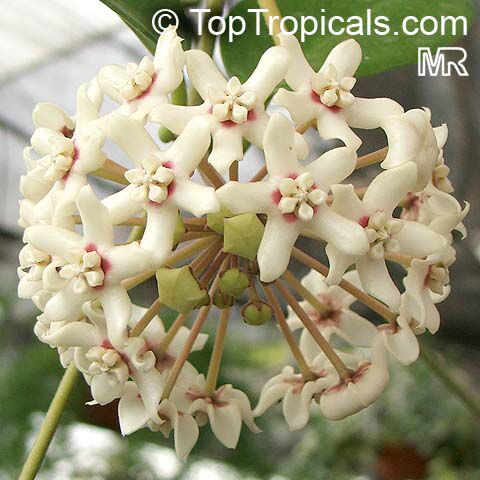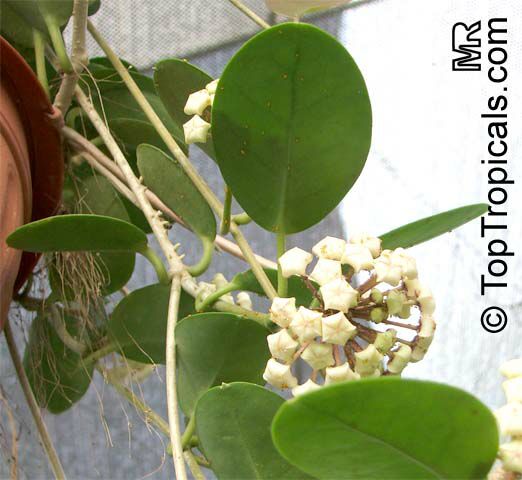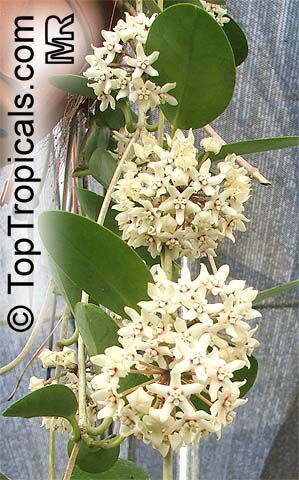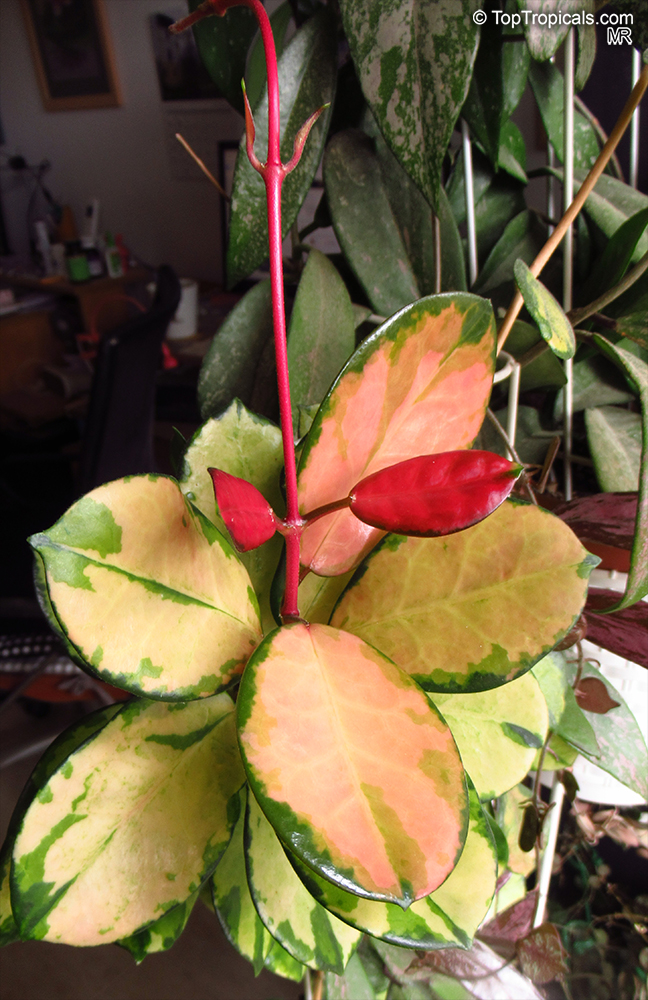Pictogram Guide · Mouse over pictogram for definition
Hoya australis
Common WaxflowerFamily: Apocynaceae (Formerly:Asclepiadaceae)
Subfamily: Asclepiadoideae
Origin: Australia






The waxflower, or Hoya australis, is a tropical species that thrives in USDA Zone 9-11. It is also a popular choice for container and hanging basket gardens, as it is a moderately vigorous climbing plant. The leaves are thick and succulent, almost round in shape, and can grow up to 9cm across. The stems contain a white, milky sap that is poisonous. The flowers of the waxflower are fragrant and white in color, with deep red markings in the center. They grow in clusters of up to 40 on long stalks.
When caring for the waxflower in cold regions, it is important to provide moderate, but not excessive, water. In winter, the plant should be kept slightly dryer than in summer. It is also important to protect the waxflower from temperatures below freezing. In order to achieve optimal growth, the waxflower should be grown in a well-lit area with a bit of dappled overhead shade to protect it from the sun. It thrives in well-drained soil, though it does not require particularly fertile soil.
The waxflower can be propagated from cuttings taken at any time, using a good propagating mix, or from fresh seed. It is successful in temperate areas if protected from frost, although it will tolerate light frosts. Flowering is best with good light, but the plant will still grow in heavy shade. Overall, the waxflower is a beautiful and fragrant addition to any garden, as long as it is given the proper care and protection.
Similar plants:
- Hoya 'Ban Ngong Ngoy' (Hoya 'Ban Ngong Ngoy')
- Hoya archboldiana (Papua Wax Plant)
- Hoya bella (Beautiful Hoya, Pretty Waxflower)
- Hoya bilobata
- Hoya calycina (Wax Flower)
- Hoya carnosa (Wax Plant)
- Hoya carnosa Compacta (Hindu Rope, Krinkle Kurls)
- Hoya curtisii (Million Hearts, Tiny-leaf Porcelain Flower)
- Hoya kerrii (Wax Hearts, Sweetheart Hoya, Valentine Hoya, Heart leaf)
- Hoya lacunosa (Wax plant)




